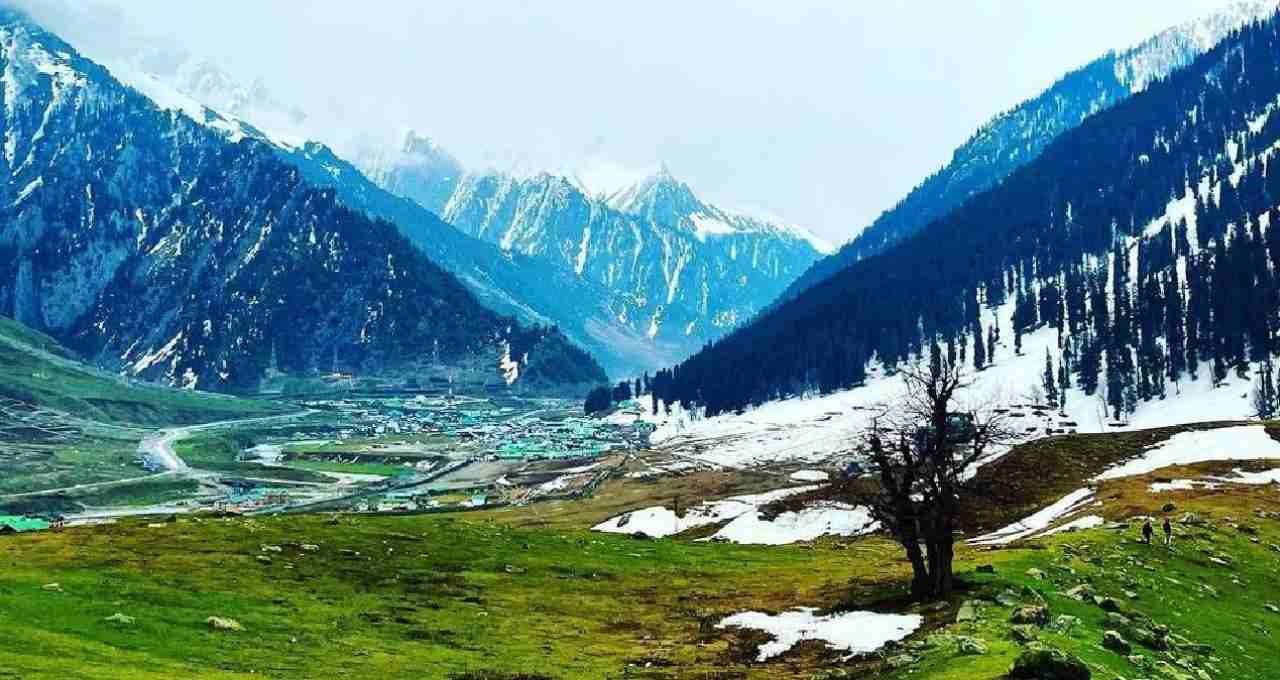Kashmir, often called "Heaven on Earth," is renowned not only for its breathtaking natural beauty but also as a bastion of ancient Indian culture and religion. For centuries, it has been a significant center of Hindu religion, culture, and spirituality. While misconceptions exist regarding the Hindu presence in Kashmir, the truth is that Hinduism's history in the region stretches back over 5000 years.
Evidence of this is found in the Rigveda, the Mahabharata, the teachings of Shankaracharya, Kashmiri Shaivism, and numerous other historical events and texts. To understand Kashmir's historical and cultural flow, we must look back to its ancient period when a flourishing and expansive form of Hinduism and its culture existed in this land.
Kashmir's Presence in the Rigveda and Vedic Period (Before 1500 BCE)
The earliest mention of Kashmir is found in the Rigveda, during the expansion of the Aryan civilization. The Rigveda refers to the "Sapta-Sindhu" region, which included Kashmir. This was a time when sages and ascetics came to the Himalayan region of Kashmir for penance. The name Kashmir originates from Kashyap Rishi, who is credited with freeing the region from water and settling its people. This area, in its ancient form, was a profound center of Vedic literature and religion, where sages practiced meditation and spiritual disciplines.
Kashmir's Importance during the Mahabharata Period (Around 3100 BCE)
The epic Mahabharata mentions Kashmir as a significant Janapada (kingdom). Kshatriyas, Brahmins, and other Hindu communities were present. Kashmir's land has always been a part of the Indian religious and political landscape. The Mahabharata also mentions King Ugrakarna of Kashmir, who had ties with Duryodhana. During this period, Kashmir played a significant role in the religious and cultural context of the Indian subcontinent.

The Mauryan Period and Emperor Ashoka's Presence
Emperor Ashoka is known for spreading Buddhism, but before his time, Kashmir was a bhold of Vedic Sanātana Dharma. The influence of the intellectual prowess and knowledge of Brahmins in Kashmir provided fertile ground for Buddhism's growth. Ashoka laid the foundation for Buddhism in Kashmir, but a b Hindu presence remained. Buddhism's influence in Kashmir also evolved from and alongside Hindu traditions, creating a unique synthesis.
Shankaracharya and the Sharada Peeth (8th Century CE)
Adi Shankaracharya, the great Acharya of Indian philosophy and Vedanta, came to Kashmir and established the Sharada Peeth. This Peeth became one of India's four major centers of learning, giving Kashmir the status of a capital of knowledge. Shankaracharya also propagated Kashmiri Shaivism and Advaita Vedanta. The Sharada Peeth's historical and cultural significance endures, representing a crucial aspect of Kashmir's spiritual legacy.
Kashmiri Shaivism: 8th-12th Centuries
Kashmiri Shaivism, a significant branch of Hinduism, experienced a golden age in Kashmir from the 8th to the 12th centuries. During this time, great philosophical Acharyas like Abhinavagupta, Vasugupta, and Kallaṭa shaped Kashmiri Shaivism. Kashmiri Shaivism went beyond Advaita Vedanta, encompassing a broader spiritual and mental development, not just philosophical concepts. Kashmir's influence on Indian religious thought during this period was profound.

Muslim Invasions and the Struggle of Kashmiri Hindus (After the 14th Century)
Muslim invasions after the 14th century impacted Kashmir, but Kashmiri Hindus made great sacrifices to protect their culture and religion. The famous Martand Sun Temple and Avantipora Temple in Kashmir stand as testaments to the grandeur of Kashmir's Hindu history. Kashmiri Pandits fought to preserve their religion, culture, and dignity. Their struggle maintained Kashmir's Vedic and Hindu identity.
Kashmir's Cultural Heritage and the Enduring Presence of Hinduism
Hinduism's presence in Kashmir wasn't merely religious; it was integral to cultural and social life. Kashmiri art, music, literature, and architecture clearly reflect Hindu influence. The temples, sculptures, and architecture of Kashmir deeply reflect Vedic and Hindu culture. The Martand Sun Temple, Sharada Peeth, and other ancient sites showcase the greatness of Hinduism in Kashmir.
Kashmir's history is an epic saga, witnessing not only religious conflicts but also cultural richness and religious tolerance. Hinduism's presence in Kashmir is not just 100-200 years old; it's over 5000 years old. This land has always been an integral part of Indian Sanātana consciousness, where sages performed penance, where Shankaracharya and other philosophers propagated their ideas, and where Hinduism and its culture thrived for millennia.

Despite changes in the region's identity, Hinduism has always been a major current in Kashmir's cultural and religious stream. Kashmir's history embraces the invaluable heritage of Hinduism and its culture, teaching us that our culture, religion, and traditions transcend the storms of time. Kashmir's Hindu history holds a significant place in the foundation of Indian civilization, and remembering and cherishing this history is our responsibility.











